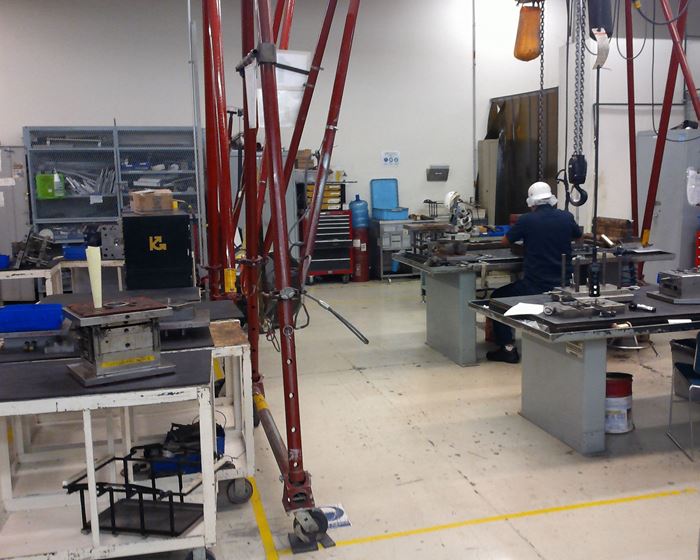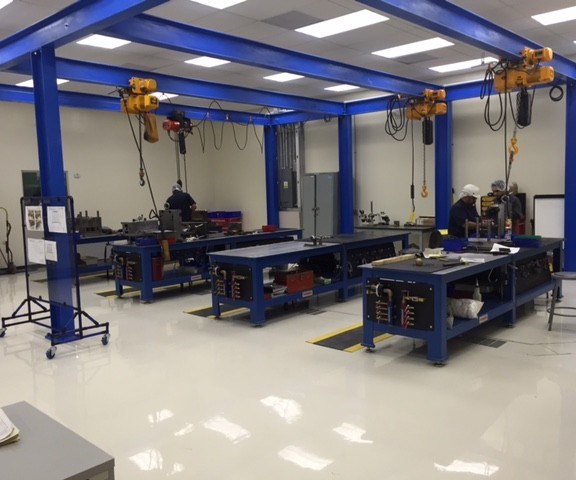Maintenance Matters: Look How Far Mold Repair Has Come
To understand how repair shops have changed over 20 years, look at a company’s ability to break down, measure and apply specific data in the five factors of total mold control.
Share
Read Next
Those were the days. We smoked at our milling machines and safety glasses were optional. We had ample repair technicians, and there was plenty of overtime to go around. Music blasted from multiple radios and snack-covered benches. Journeyman toolmakers would migrate from shop to shop on a whim or for another 50 cents an hour, and apprentices started by manning mops and brooms. The job was simple: repair your mold, get it back in the press, and do not screw up anything. How we chose to get things done and to provide supporting documentation, if any, was a personal choice. The job description did not include long-term mold performance or shop-efficiency goals. We operated by a “just fix it” mentality.
Now and Then
Much has changed in the 20 years since MoldMaking Technology’s inception. In honor of the 20-year anniversary, Editorial Director Christina Fuges asked me to compare repair shops of today with those from two decades ago. Like most things in the plastics industry, technological advancements have improved the way that businesses set up and run mold repair shops, but the changes are dramatic in some areas and not so much in others. A few shops still cling to comfortable past practices that outdated maintenance cultures sustain and that remain unchallenged through time. Stepping into these shops is a throwback—where only the air is cleaner.
To appropriately examine these changes, we must first categorize the different areas of mold shops and how they function. Readers who are familiar with my past articles and our training courses know that the five factors of total mold control dictate the growth and improvement of all mold repair shops, regardless of the type of plastic product that a shop’s molds make. Those factors are leadership, maintenance strategy, documentation practices, shop design and shop skills.
Leadership
Today, those who oversee mold maintenance are facing new, more difficult challenges. Molds are getting more complex through technological advances in mold design and mold building. Product and part designers want to do more with molds than just mold parts. They want in-mold assembly, in-mold labeling, two- and three-shot over-molding and higher cavitation. Everybody wants their molds to run faster and longer, to mold higher quality parts and to require less maintenance. Hot runner manifold systems that require higher skill levels in both the processing and maintenance departments are replacing cold runners.
Along with new mold design requirements, new engineered resins, additives and colorants are constantly introduced to the market. These advancements make products last longer, look better and fit better. Occasionally, these advancements facilitate the development of products that are biodegradable and that are environmentally safer than previous models.
To address these new product and volume requirements, shops are building molds better. Improvements to thermography, mold flow analysis, pressure sensors, conformal cooling, steels and coatings are all great developments that help molds perform better and last longer, but not without a cost. These improvements, in addition to a plethora of new CNC metal working equipment, lasers, engravers and tricked-out tooling components, jack up the cost of molds, making efficient and accurate maintenance even more critical.
Leadership today must continue improving the ability to track and recognize the performance characteristics and maintenance requirements of every mold run. Effective tracking creates more accurate and timely maintenance plans that, in addition to the appropriate training, will empower repair technicians and raise shop skill levels to meet these demands.
Maintenance Strategy
Twenty years ago, the predominate strategy was to assign a mold to an experienced maintenance technician (usually a toolmaker) in which the technician would review a few hand-scribbled notes concerning what repairs the mold needed. These experienced technicians would make the necessary repairs and clean the mold using hand-me-down practices and bench techniques. This is the essence of firefighting, and unfortunately, it is a culture in many shops that persists.
Today, forward-thinking, pro-active shops track every mold’s performance and maintenance requirements to create maintenance or project management (PM) plans that address what needs to be fixed. These shops also track target-specific, high-cost or product-based issues over time (in cycles) to set goals and make continuous improvements to mold performance and shop-maintenance efficiency. This pro-active strategy (called RCM or Reliability Centered Maintenance) uses the data from the ongoing tracking to justify costs and to drive and sell improvements in all five factors to a company’s upper management.
The barrier that keeps more shops from operating with a measurable, pro-active strategy is directly related to shops’ inability to capture the true costs of mold performance and maintenance. True cost metrics are necessary to quantify and validate changes and improvements in each of the five factors that in turn control one’s ability to efficiently produce quality parts on time. A reactive, firefighting culture prevails 20 years later.
Documentation Practices
The predominate reason for that barrier involves documentation procedures. Twenty years ago, there were fewer off-the-shelf work order systems. Record-keeping consisted of manual entries in log books and repair tickets. No shortage of electronic options exist today. Vintage work order systems have been replaced and supercharged through world-wide connectivity, cloud-based storage, corporate-sized enterprise resource planning (ERP) systems and even phone apps. These innovations were designed to improve the information gathering and usage that shops need to initiate real, measurable changes.
Because most systems are used to track maintenance on anything mechanical (for example, on things like fork trucks, presses, electric motors and compressors), the majority still rely on free-form text fields containing maintenance stories for managers and technicians to use. This means that the accuracy and completeness of the data collected is entirely dependent on the journalistic and grammatical skills of the user. In my experience, unstructured maintenance stories remain the number 1 reason that mold repair shops remain mired in firefighting cultures.
Unstructured maintenance stories remain the number 1 reason that mold repair shops remain mired in firefighting cultures.
Improvement will only be driven as far forward as data allows. In today’s lean companies, the owners, plant managers, tooling engineers, managers and maintenance technicians increasingly need data that is accurate, fast and clean to be of value. It just makes economic sense to drive improvements that are based on real costs. Once shops are placing greater attention on lowering maintenance costs, unsupported opinions will do little to justify more capital for resources, tools and training. Saving money is a language that everyone understands.
Shop Design
Twenty years ago, we could chew tobacco, smoke and snack while we worked. Safety glasses and other personal protective equipment (PPE) were optional. Tool chests for moldmakers even came equipped with a mirror and a set of tweezers to pick steel chips from blistered eyes. HR (for Human Resources) meant Home Run. Only the most stringent medical companies required hairnets, coats and footsies in the repair shop.
Twenty years ago, repair technicians cleaned by hand using solvents and an array of bottle brushes, Scotchbrite, sandpaper, stones and files. Airlines, water hoses and electric cords provided ample tripping hazards while working. Technicians flipped molds precariously by hand or with the aid of a single overhead hoist. Plastic smoldered from overheated hot-runner systems that hung in the air. Cleaning solvents came with warnings not to inhale the vapors or to touch with skin during prolonged use. It’s a wonder any of us lived through those times!
In those days, maintenance areas were typically cramped, dark, dreary and greasy places that were stuffed back in to the corner of a warehouse where few ventured unless it was necessary. Shops gave little consideration to planning for future growth, and shops gave little thought to their mold workflow, the strategic placement of machines and metal working equipment or to the ergonomics of working on molds with hand tools at a bench.
Today, many shops are much improved when it comes to safety and health concerns. Repair technicians run and repair molds for medical and consumer goods in clean-room environments as the FDA and other regulatory boards mandate. However, other areas of shop design still vary greatly. The culture of the company and the ability to justify the cost of new tools, equipment or a general shop overhaul dictate these other areas. Those that can enjoy ergonomically built, better-equipped and strategically located work benches, improved lighting and the use of cleaning technologies like ultrasonics, dry ice, laser cleaning and plastic media blasting. For those companies, floors are tiled instead of epoxied over cement, and walls are made with fiberglass-reinforced plastic (FRP) or PVC instead of drywall. In some cases, there are no walls. At these shops, PPE equipment is abundant and dispersed from vending machines, like tooling components or crib items.
More managers today understand that shops must be set up for success to inspire. Or, shops must be set up to require that technicians achieve the skill level that is necessary to competently address the more difficult mold repair challenges of the present.
Shop Skills
Twenty years ago, most repair technicians were journeyman toolmakers. Skills like welding, brazing, machining, polishing, fitting and fabricating close-tolerance tooling were abundant. If an item wasn’t needed quickly, there was little that the toolmaker couldn’t do. Shops drafted most of the repair technicians, as the majority of workers preferred to build molds instead of clean and repair them. Therefore, shop cultures were much better suited for implementing unique, short-term fixes than for troubleshooting mold or part issues to find root causes and implement long-term repairs. Shops rarely questioned individual methods, as that might lead to a sudden departure, and so the label “prima-donna” was born.
As the baby boomers retired, the industry suffered a shortage of skilled technicians to replace them. To address this problem, many companies were forced to hire less-skilled employees to basically clean molds and perform minor PMs, leaving the more complex or difficult work for local machine shops or for the mold builder to make repairs. This has created a new breed of specialized repair technicians who have fewer bench and machine skills and who mostly just clean. This has led to a increased cost for repairs, more part-quality issues, mold downtime and the inability to react quickly to mold performance issues in-house. But, there is hope.
Today, shops do a better job challenging younger technicians who enjoy the troubleshooting aspect of mold maintenance more than in other generations. They do not just blindly accept the past repair practices of baby boomers. They are savvier with PCs, and they are quite comfortable navigating the web to learn about molds and new technology that is used to design, build and maintain them. The younger crowd also more readily accepts and embraces that data is a valuable tool. We see a growing commitment to developing a mold’s knowledge base that makes it exciting to train and work with younger technicians who are open to new ideas and who are quick to check the history of molds to make more informed maintenance decisions.
The challenge is that many over the past 20 years have not developed hand skills and tool knowledge through hobbies like repairing cars, motorcycles, lawnmowers or other mechanical equipment. The feel associated with using hand tools correctly and safely might not be present initially, but it is something that new technicians can learn once training professionals explain and physically demonstrate the basics of a tool. Companies need to continue training and grooming these new, hungry apprentices into capable and skilled craftspeople.
All in all, the main differences between mold repair shops today and 20 years ago are evident in a company’s ability to break down, measure and apply specific data in the five factors of total mold control. Huge improvements have been made on the safety and technology fronts, but the firefighting maintenance culture of 20 years ago has deep roots. New technology in mold design, building and processing will continue to challenge repair shops and maintenance professionals, and how they address these challenges will be what differentiates today’s shops from those in 20 years from now.
New technology in mold design, building and processing will continue to challenge repair shops and maintenance professionals, and how they address these challenges will be what differentiates today’s shops from those in 20 years from now.
About the Contributor
Steve Johnson
Steve Johnson is president of MoldTrax Maintenance Solutions, which provides specialized course work, hands-on bench training, maintenance software, maintenance products, toolroom design and maintenance efficiency auditing.
Get Social and Be a Part of the 20th Anniversary Coverage with #MMTMag20 on
Twitter, LinkedIn and Facebook.
Related Content
Laser Welding Versus Micro Welding
The latest battle in finely detailed restoration/repair of mold materials.
Read MoreHow to Overcome Complex Mold Texturing Problems
Key benefits when considering laser technology for mold texturing and repair.
Read MoreThink Safety: Eliminate Hazards Throughout the Shop
The tooling community is taking advantage of new products for safer mold shops and molding facilities.
Read MoreQuestions and Considerations Before Sending Your Mold Out for Service
Communication is essential for proper polishing, hot runner manifold cleaning, mold repair, laser engraving and laser welding services.
Read MoreRead Next
International Perspective: Twenty Years of Tool and Die Making in Europe
The European tool and moldmaking industry has moved from manual to industrial production via internationalization, digitalization, automation and communication.
Read MoreAre You a Moldmaker Considering 3D Printing? Consider the 3D Printing Workshop at NPE2024
Presentations will cover 3D printing for mold tooling, material innovation, product development, bridge production and full-scale, high-volume additive manufacturing.
Read MoreHow to Use Strategic Planning Tools, Data to Manage the Human Side of Business
Q&A with Marion Wells, MMT EAB member and founder of Human Asset Management.
Read More























